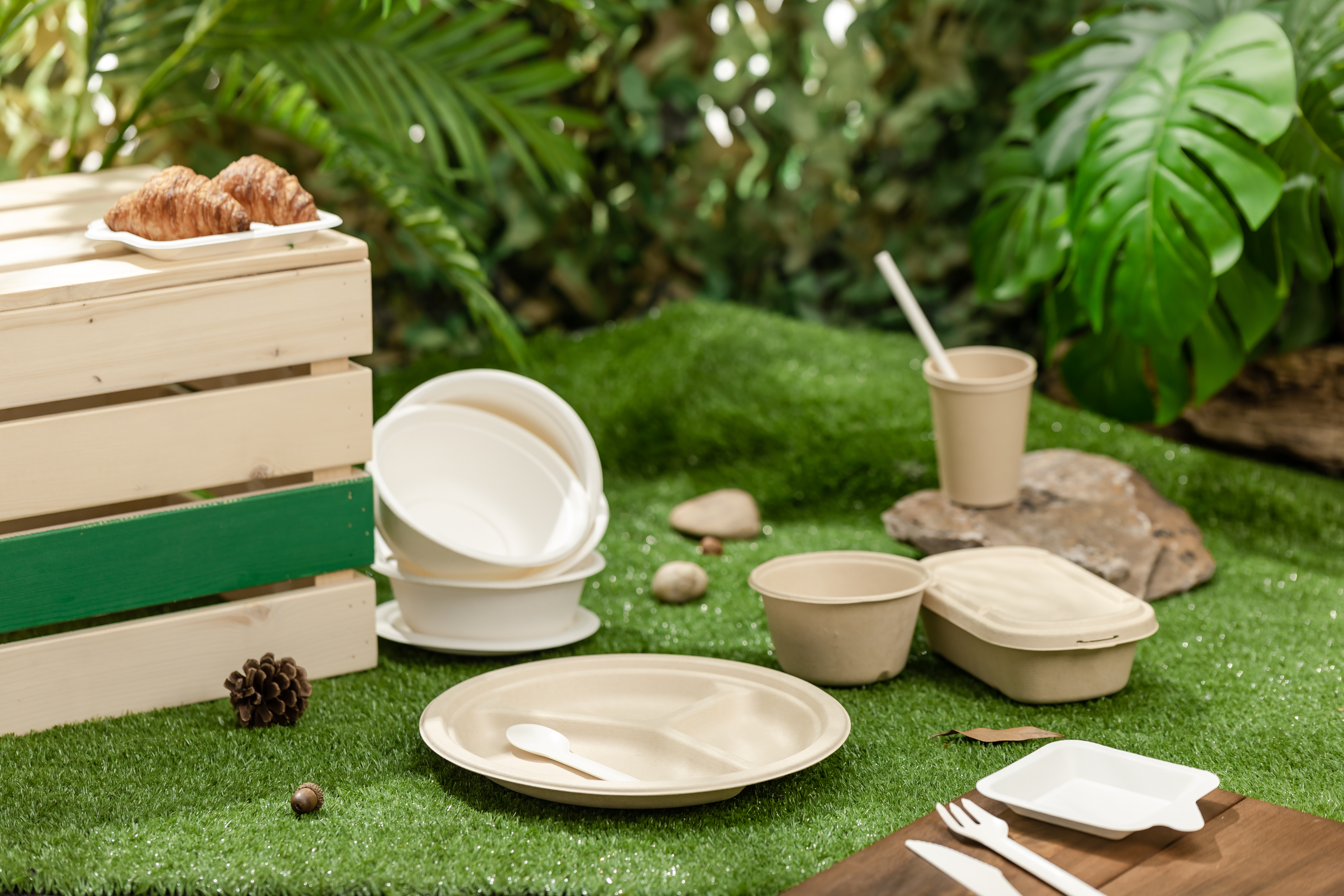Author: Alex Publish Time: 2025-02-25 Origin: Alex








Biodegradable disposable cutlery is revolutionizing the food packaging industry with its eco-friendly properties and versatile applications. Whether you're hosting an event, running a food business, or simply looking for sustainable alternatives, understanding the properties of biodegradable cutlery is essential. Below, we explore its key features, including heat resistance, oil resistance, and leakage prevention, to help you make an informed choice.
Biodegradable cutlery designed for hot food and beverages must meet strict heat resistance standards. For example:
Containers like boxes, cups, and bowls should not deform, peel, or wrinkle when exposed to hot liquids or dishes. They must also prevent leakage or clouding.
Utensils like plates, knives, forks, spoons, and chopsticks do not require heat resistance unless specified. However, non-heat-resistant items must be clearly labeled with their maximum heat-resistant temperature.
This ensures that biodegradable cutlery maintains its integrity and functionality, even when used with hot meals or drinks.
Oil resistance is another critical property, especially for cutlery used with greasy or oily foods:
After exposure to hot oil, biodegradable cutlery should not deform, peel, or wrinkle. Containers must also prevent seepage or leakage.
This requirement primarily applies to boxes and bowls that may hold hot, oily dishes. Utensils like plates, knives, forks, and chopsticks typically do not need oil resistance unless specified.
By meeting these standards, biodegradable cutlery ensures a seamless dining experience without compromising on sustainability.
For cutlery designed to hold liquids, such as boxes, bowls, and cups, leakage prevention is a must. After rigorous testing, these items should show no signs of water leakage. However, utensils without liquid-holding functions, such as plates or chopsticks, are exempt from this requirement.
This feature makes biodegradable cutlery ideal for both dry and liquid-based meals, ensuring convenience and reliability.
At [Your Company Name], we are committed to providing innovative and sustainable packaging solutions that protect the environment and human health. Our biodegradable disposable cutlery is made from sugarcane-based materials, offering a renewable and eco-friendly alternative to traditional plastic.
Eco-Friendly: Made from renewable resources, reducing carbon footprint.
Durable: Heat-resistant, oil-resistant, and leak-proof for versatile use.
Customizable: Available in various sizes and designs to meet your specific needs.

If you have questions about biodegradable disposable cutlery or need assistance with customization, contact us today! We offer tailored solutions to meet your requirements, ensuring you get the most sustainable and functional packaging for your business or event.
Let’s work together to create a greener future—one meal at a time.
1. The Rise of Sugarcane Pulp Tableware: A Circular Economy in ActionSugarcane pulp tableware exemplifies "waste-to-worth" innovation. In regions like Yunnan, China—a major sugar-producing area—40+ million tons of sugarcane residue annually are repurposed instead of burned . Through advanced pulping
Upgrade Your Packaging: How Molded Pulp Empowers Modern BrandsXuSheng — Your One-Stop Partner for Sustainable Packaging SolutionsIn today's market, consumers overwhelmingly favor brands that prioritize the planet. It's time to move beyond plastic foam and embrace molded pulp—a packaging material tha
To ensure safety and hygienic packaging, biodegradable disposable plates and cutlery should be operated according to the following procedures: 1. Always keep the packaging workshop sealed, dry and hygienic. 2. Operators entering the packaging workshop should change clothes twice and be strictly ster
What are the advantages of a one-time eco friendly cutlery set, the biggest advantage of a compostable cutlery kit is that it is clean and hygienic, no cleaning, and one-time use. When it comes to cleaning ceramic tableware, we all know that bacteria and viruses need to be in hot water for a certain